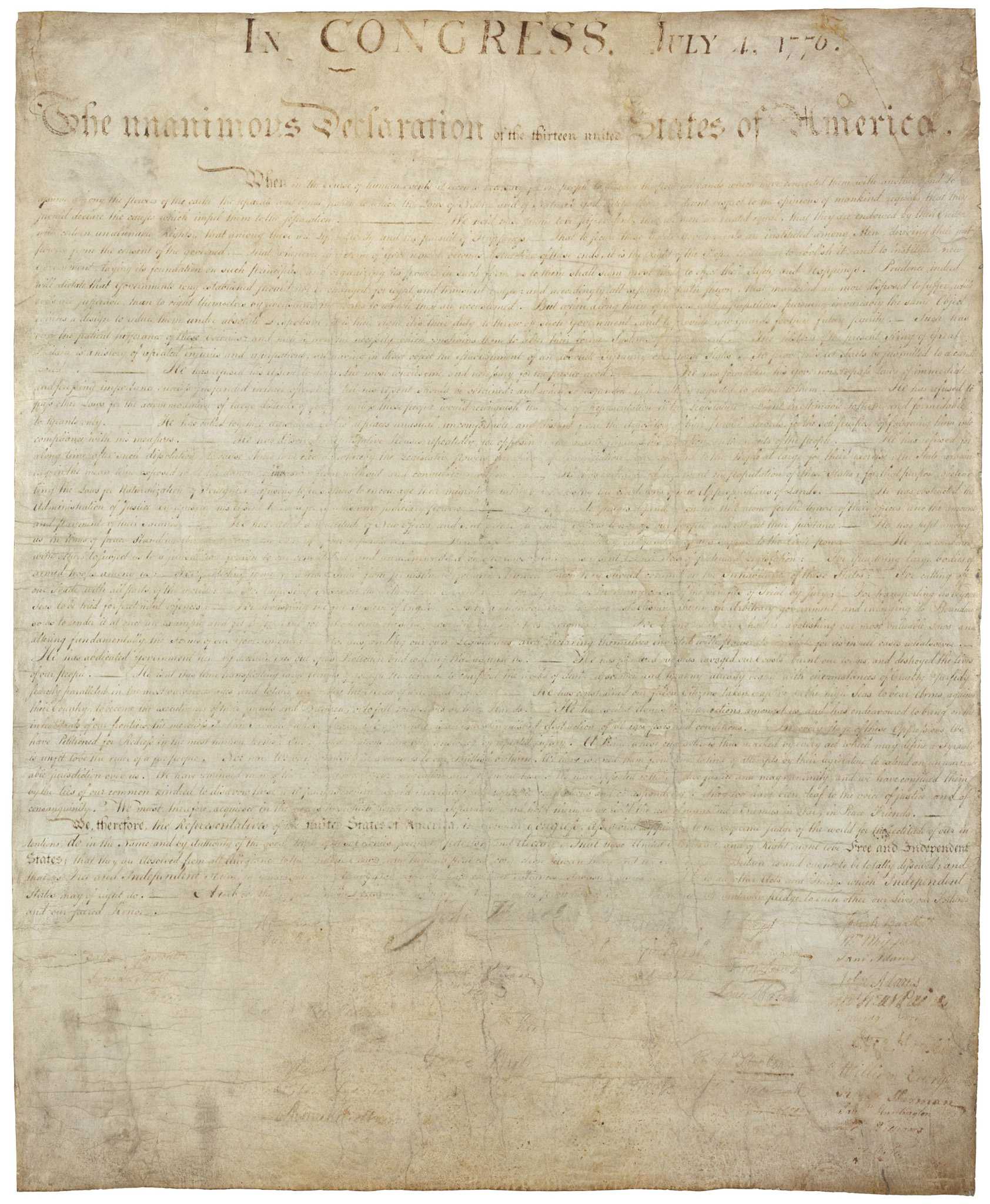Chapter 3
Paradox of Liberty & the Founding of America
The paradox of the American Revolution―the fight for liberty in an era of widespread slavery―is embedded in the foundations of the United States. The tension between slavery and freedom—who belongs and who is excluded—resonates through the nation’s history and spurs the American people to wrestle constantly with building “a more perfect Union.” This paradox was embedded in national institutions that are still vital in the nation to this day.
The Founding of America
Declaration of Independence by John Trumbull
The United States of America was founded on dissent. American colonists waged a war for the principle that no one—no king, no lord, no president—held the right to rule without the consent of the people. This demand for popular sovereignty grew out of the experience of the founders, who understood the power granted by liberty. It also sprang, in part, from the actions and political philosophies of enslaved men and women, who contested the right of any person to dominate another. Freedom was revolutionary, contagious, and incomplete.

All men are created equal . . . with certain unalienable Rights . . . whenever any Form of Government becomes destructive of these ends, it is the Right of the People to alter or to abolish it.
Declaration of Independence, 1776
Race and the Founding Documents
Three documents provide touchstones for American debates over liberty: The Declaration of Independence, which boldly states that all men are created equal; the United States Constitution, which provides the framework for a democratic government; and the Bill of Rights, which protects individual liberties and limits government actions. The founding documents supported slavery. Yet the authors of each document took great pains to avoid the words slave or slavery, unable to reconcile the paradox of enslavement in a land of liberty.
1776: The Declaration of Independence
Declaration of Independence, 1776
"We hold these truths to be self-evident, that all men are created equal." With these words, the Declaration of Independence established what would become a cornerstone of the American dream—that all people would be recognized as equal and granted rights, dignity, and privileges. Antislavery activists, enslaved and free, Black and white, seized on this declaration to press for a nation based on liberty and equality.
1787: The Constitution
The United States Constitution, 1787
The Constitution charted new territory. No other modern nation had attempted to form a republic—a government where the people decide who has the right to rule. Yet the Constitution upheld the institution of slavery even as it expanded liberty. The Constitution classified African Americans held in bondage as three-fifths of a person, decreed that all states had to seize fugitive slaves and return them to bondage, and ensured that the nation would maintain the Transatlantic Slave Trade for 20 years.
The Bill of Rights
The Bill of Rights, 1791
Before the Civil War, many Americans saw a powerful federal government as a threat to individual liberty. The first ten amendments to the Constitution, known as the Bill of Rights, limited federal power by protecting citizens’ freedom of religion, freedom of speech, and many other rights. Yet neither the Constitution nor the Bill of Rights defined who was a citizen. To this day, the American people point to both documents to expand or limit who is included in the phrase “We the People.”

If the Bill of Rights, or the declaration of Congress are of any validity, we beseech that as we are men, we may be admitted to partake of the Liberties and unalienable Rights therein held forth.
A Petition of Absalom Jones and Others, 1799
